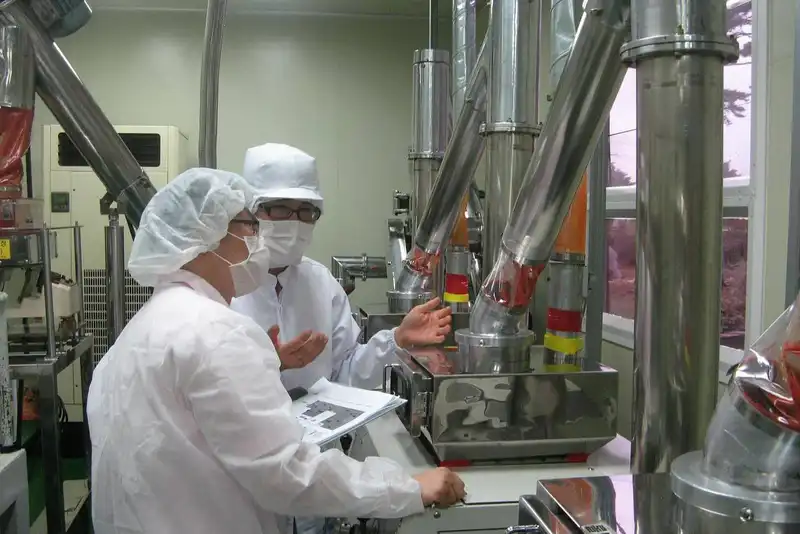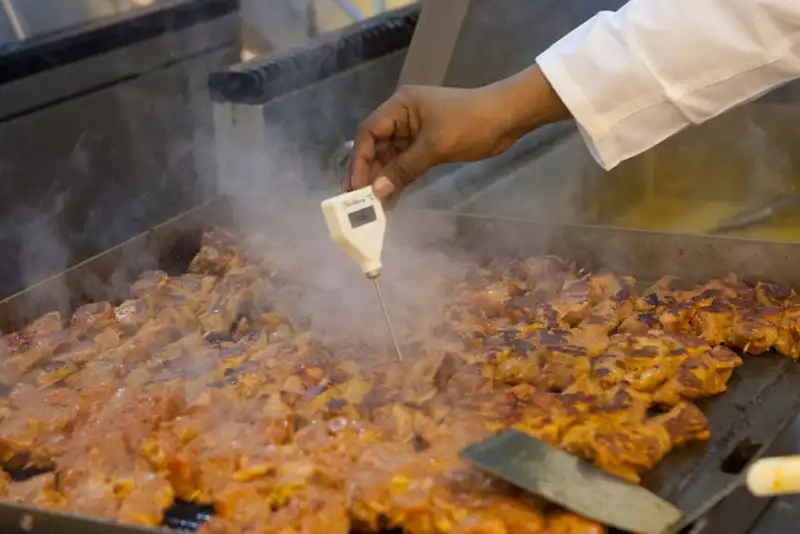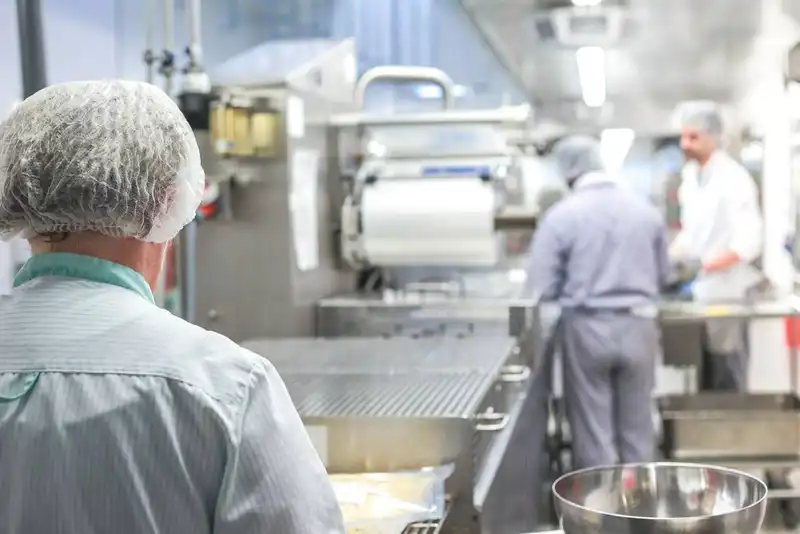What is food manufacturing ?
Food manufacturing is the process of transforming raw materials into food. Food processing falls under food manufacturing.
20 Tips to Boost Your Food Manufacturing Company's Productivity
How to be more efficient with food processing

According to the US Bureau of Labor Statistics, food manufacturing involves transforming livestock and agricultural products into other products for immediate or final consumption. Every other basic food ingredient falls under the scope of livestock and agricultural products. Food processing means the basic preparation of foods, the alteration of food products into another form, preservation, and packing techniques. Food processing is any method that converts fresh food into food products. This includes processes like washing, chopping, freezing, pasteurizing, packing, cooking, fermenting, and so on.
Efficiency is one of the main challenges faced by food manufacturers. Cutting the costs and delivery time boost profits in a big way. To achieve this, there are several ways like equipment and tools purchasing, research and development, new technologies, and equipping the workforce. Here are a few methods to improve your food business and enhance efficiency.
Quality control policies
Quality control should be your high priority when it comes to food manufacturing. Food recalls inferior goods, and negative public opinion and health impact will ruin all the progress you've made.
Inventory tracking
It is important to implement a proper inventory tracking system in your restaurant or food manufacturing companies. An inventory management app like Zip Inventory available on Hub Works store can highlight any shortages and help with sourcing supplies. Automation and AI tools that can monitor and get new goods will be helpful in this regard.
Staff training programs
One of the major contributing factors to food contamination comes from human contact and negligence. Food manufacturers can conduct training and proper handling protocols for staff and this will contribute to the development of high-quality food and goods.
Using technology to manufacture food products easier
Food manufacturers are constantly looking for ways to improve and optimize their food production. They are also open to adjusting to a shift in consumer demands. Recently more focus has been placed on health, freshness, and sustainability. Most food manufacturers have started to take notice and are investing heavily in food tech, agricultural tech, and other technologies to keep up with the demand.
Regular maintenance
There are chances of losing your entire inventory or a broken refrigerator or a heating unit. Regular maintenance can prevent breakdowns. Install backup generators to keep refrigeration and heating units going on a blackout.
Accurate demand and supply forecast
Inventory is crucial for a food manufacturer for storing and buying necessary products. When food processing units and restaurants know the demand beforehand, it keeps the cash flow on track and reduces risks. Zip Forecasting app available on Hub Works store help food manufacturers and restaurant owners to forecast sales and plan for labor coverage.
Improved customer experience
The food market is loaded with products and services. The food industry allows business owners to understand customers a little better and provide them more than they expect. For example, restaurants provide loyalty programs to improve customer experience and boost revenues. Zip Loyalty is a tool that helps you to collect data about customers and understand what they are looking for. You can then personalize the loyalty program and make sure the customers receive discounts.
Recipe flexibility
With consumer demands changing daily, food manufacturers should be ready to adapt. They need to change the products' packaging and recipes and deliver them faster to the market. Digital recipe management tools help the food industry in a big way to achieve this, allowing to save more by spending less.
Your one stop shop for the latest news
Subscribe and stay informed about everything restaurant and food related!
Implementing quality control in food manufacturing

It takes just one or two dishes on the menu that your customers may feel disappointed and turn away from the brand. That's exactly why quality control matters. If you can provide your customers with high-quality products you can have several benefits.
It is said that increasing customer retention by just 5 % can increase profit by up to 95 %.
The food and beverage manufacturing industry deals with various sensitive products. This is one of the reasons why it is important to maintain quality standards and adhere to quality requirements. When it comes to food and food brands, we tend to buy things that are of good quality. And in the food manufacturing and restaurant industry, a small incident of quality issues could tarnish the entire brand image. It could end up in the company's profits crashing down the hill. Quality control is generally a reactive process and it identifies and rectifies the problems in finished products. It is achieved by understanding and removing sources of quality problems so that the customer's requirements are met. After all, the higher and more consistent your product quality, the happier your customers are. This states that you are already ahead of the competition.
How to factor food safety into food manufacturing
Food safety means routines in the preparation, handling, and storage of food to prevent foodborne illness. From farm to factory to fork, food products may go through several health hazards during their journey to the supply chain. To curb these risks and prevent harm to consumers, safe food handling practices and procedures are implemented at every stage of food production.
Food safety prevents germs from multiplying in the food and reaching dangerous levels. Food safety ensures that food is made and consumed in a safe condition. In case a customer identifies safety issues in food, the food manufacturer or the restaurant owner may face legal action. Hence maintaining food safety becomes a matter of paramount importance in the food manufacturing industry.
Around the world, most food safety laws are based on the HACCP concept. The Hazard Analysis Critical Control Point (HACCP) is a systemic risk management system that prevents biological, chemical, and physical contamination of food in production, packaging, and distribution. HACCP concept is introduced to counter health hazards by understanding major food safety problems before they happen than inspecting food products for hazards later. Zip HACCP food safety software available on Hub Works storeallows monitoring food safety in a hassle-free manner. As a food manufacturer, you can track major food safety tasks in real time and make sure the employees and workers follow the standard operating procedures.
Understand your business to better in the food industry
Food manufacturers face the daily challenge of lowering costs and increasing revenue. Therefore understanding the business and involving appropriate technology or software solutions help them achieve more revenue in the long run. One way to improve the business is to use a quality tool to generate the necessary reports regarding sales, labor, cost control, and so on. For instance, Zip POS Dashboard, available on Hubworks, helps you to keep a track of the data related to food production companies. This data helps you to find the trending facts and major problems affecting your business. With Zip POS Dashboard, the data can be generated in a few clicks. Another way to improve the business is managing products with short shelf life. There is a thin balance between the under and overstocking of food products. If you overestimate the need for a product, it may lead to dead stock. With real time updates, you can slice data for proper forecasting and streamlining the inventory. One can make use of Zip Inventory available in the Hub Works store to take inventory counts of the food items.
Last but not the least, make a strategic plan to automate all your processes in food manufacturing. To ensure food safety, try to eliminate human intervention as much as possible. One can use a proper management system so that it increases not only productivity but also huge profit in terms of quality control and hygiene.
Food manufacturing insider tips
Subscribe and stay informed about everything restaurant and food related!
Be aware of the most common issues with food manufacturing

Food manufacturers in the United States produce nearly $700 billion in revenue every year. But it faces tougher challenges than before.
Consumer demands change every other season, especially post-COVID 19. To cater to this demand, food and beverage manufacturing companies started responding with healthier and sustainable alternatives. They started finding innovative ways to create the products that the customers want.
Shortage or irregular supply of food items puts a lot of stress on food manufacturers and restaurants. Due to this, they started to manage their inventory better and diversify the supply chain. You can make use of Zip Inventory software available on Hub works website to manage your inventory better.
Another challenge is managing the rising labor costs. Most food manufacturers understand the need to balance this cost and the cost of obtaining raw materials with the volume of sales. If labor costs are increasing, it means you need to improve the sales, while maintaining the quality.
Restaurantslife provides detailed information on common issues and problem associated withfood manufacturing industry and the solutions to tackle them
Reduce waste and production time in food manufacturing

According to a study by Food Waste Alliance, it's estimated that 30 percent of all food grown worldwide may be lost or wasted. Food manufacturers play a big role in reversing the food waste trend. This can be done by influencing supplier and consumer behavior and various other ways.
Reduce Packaging
The foremost area to reduce manufacturing waste is in packaging. Look at the materials used in the packaging and consider replacing them with recyclable alternatives.
Label and Organize
Another solution is to get organized with your food manufacturing processes. This ensures that no products are accidentally wasted. It not only saves money but also reduces co2 production.
Reuse and recycle
Make sure you, as food manufacturers, are contributing to a circular economy by reusing food items. Instead of allowing food to be sent to a landfill, resend it to food banks or pet food manufacturers. You can also try food waste recycling options, by making it into manure for your farm.
Restaurantslife Features provides insight into food reuse and recycle options for customers.
How supply chain affects food manufacturing
A food supply chain or a food system means the processes that describe how food from a farm reaches our tables. The process is a combination of food production, food processing, food distribution, food consumption, and food disposal. Food moves in a domino-like motion from producers to consumers and it reaches us via food supply chains. The money consumers pay for food reaches the people in the supply chain in the reverse direction. Since a food supply chain is more like a domino, when one part of the food supply chain is affected, the whole system changes, and there will be fluctuations in price as well.
The food supply chain has changed drastically, especially after the COVID-19 pandemic. Restrictions related to travel have led to challenges affecting producers, consumers, distributors, and farmers.
Food manufacturing industries need to address customer satisfaction, build brand loyalty and optimize the supply chain. To achieve this, monitoring each stage of the supply chain is essential.
Get the latest on the food industry
Subscribe and stay informed about everything restaurant and food related!


